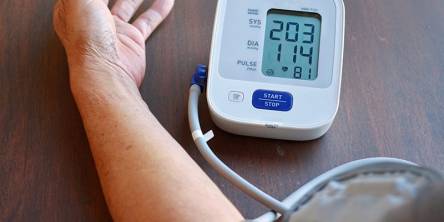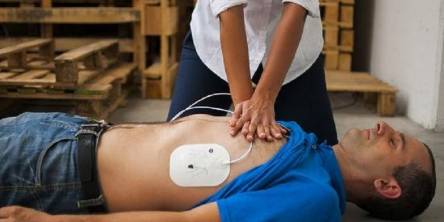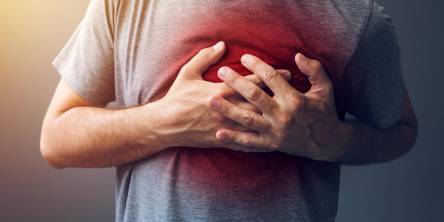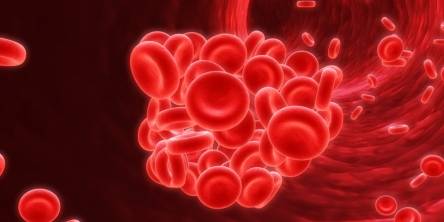How to Prevent Heart Attack

In recent decades, Western medicine has shifted its main focus quite dramatically, from infectious diseases towards cancer and chronic conditions, such as heart, stomach and liver issues. Those latter ones have much more to do with our lifestyles than with bacterial/viral infections; common risk factors include both harmful habits, such as smoking and binge drinking, and dietary preferences. Even though constantly maintaining a healthy lifestyle could prove harder than occasionally getting a pill prescription, researchers get even more evidence that the risk of heart attack is greatly lowered by adherence to dietary rules and active habits.
One of the largest studies comparing the impact of various behaviors on the risk of heart attack has been conducted at Karolinska Institute in Sweden. The study included 20,721 men who were followed for the period from 1997 to 2008 and, consequently, produced quite unambiguous results. For example, it helped establish the risk difference between smokers and non-smokers in hard numbers, which is a stunning 36 %; speaking more precisely of healthy vs. unhealthy diets, those men preferring fruits and whole-grain products had an 18 % lower risk of having a heart attack as compared to lovers of fatty and high-sodium foods.
Rule #1. Eat healthier.
A healthy diet is defined by healthcare experts as one containing reduced-fat dairy products, lots of fresh vegetables, fruits as well as nuts and whole-wheat bread. The well-being of a person does not depend solely on the kinds of products consumed; meals should be timely and balanced in size as well. Non-regular eating followed by overeating influence your metabolism most negatively, sometimes resulting in obesity, which only adds to problems with heart health.
The study by Swedish researchers featured a so-called Non-Recommended Food Score that included 21 food products. What is interesting, the “healthy eaters” tended to have almost as much non-recommended food items as the “non-healthy” study participants, namely: fried potatoes, white bread, various processed meats, full-fat dairy, refined cereals, and sweets. Apparently, certain foods should not necessarily be a priority in the list of those who want to prevent heart attack – it is not as much what you eat as how you eat it.
Rule #2. Quit smoking and do not drink too much
Hardly anybody would be surprised to find out that smoking is firmly connected to increased risk of stroke and death from myocardial infarction. Just as it has always been, non-smokers, in general, fall victim to cardiovascular diseases more rarely. The Swedish investigators have yet again emphasized the significant health benefits of not being a smoker – according to their findings, nicotine-lovers tend to have heart attacks in 36 % more cases. At the same time, modest alcohol consumption (approximately one drink or 1-2 glasses of wine a day) was connected to a reduced risk of 11 %.
Rule #3. Stay on the move and avoid excess weight
An active lifestyle of most of the study participants comprised light physical activity, such as walking or bicycling plus a somewhat more strenuous weekly exercise, such as visiting a gym or pool. The adjusted statistical data showed that the men who did not try to stay in a good physical shape had a 3% higher risk of heart attack in comparison to more physically active ones. Aside from the study from Karolinska Institute, a number of papers published in recent years have shown that centrally or viscerally obese people put their body at an increased cardiovascular risk. Overall, according to the results of the Swedish questionnaire, men with a waist circumference less than 95 cm faced a 12% lower risk of having a heart attack.
Conclusion
Even though the findings of more recent studies do not reveal something that we have not already known about healthy habits, they still shed light on the importance of having a healthy lifestyle when it comes to the likelihood of development of serious cardiovascular issues.
Similar Articles
So you’re halfway up the stairs, just a few more steps to go, and suddenly, you feel like you’ve just run a marathon. Your heart’s racing, your lungs are working overtime, and you’re left wondering if you’re that out of shape—or if there’s something more sinister going on. Don’t worry, you’re not alone
Heart disease claims the lives of 9 million people every year. There are lots of small habits and lifestyle choices that can have a negative impact on the health of our hearts, especially when they are amplified over the course of a lifetime
It can be difficult to know when you have high blood pressure because the symptoms and signs are not always obvious. If left unchecked, however, it can gradually damage your blood vessels, heart, kidneys, and other vital body organs. Blood pressure fluctuations can also be dangerous.
A reliable AED plays a vital role in increasing the survival rate of SCA. This post lists 8 reasons to tell why we need a reliable AED device and something you need to know about the AED.
Normal heart rate in people is 60-100 beats per minute. But if the heart rate is lower than 60 beats per minute, that may indicate bradycardia development. If the pulse is constantly 30-40 beats per minute and it doesn’t increase even during physical activity, it’s a quite dangerous condition.
According to statistics, people suffering from diabetes are 1.5 times more likely to develop a stroke than those who don’t have this disease. So why does it happen? The connection between these two conditions lies in the way the body transforms glucose into energy.
Black, green, white or red teas come from the same plant Camellia Sinensis. The difference lies in the processing method: Green tea is made from the buds and top two leaves of a shrub, which are then quickly steamed to prevent fermentation
Blood clotting is a necessary process that in certain instances prevent the body from losing too much blood. When you get a paper cut or a minor injury, a blood clot stops the bleeding and falls apart.








